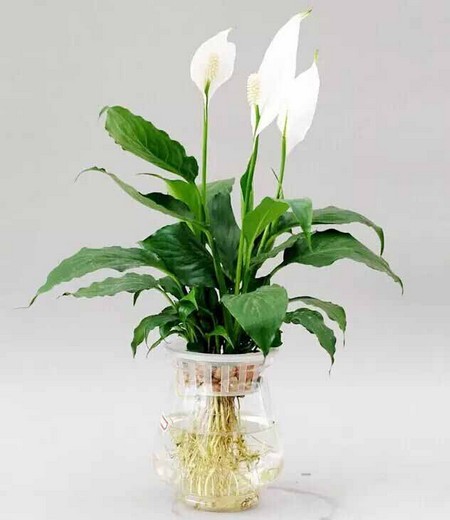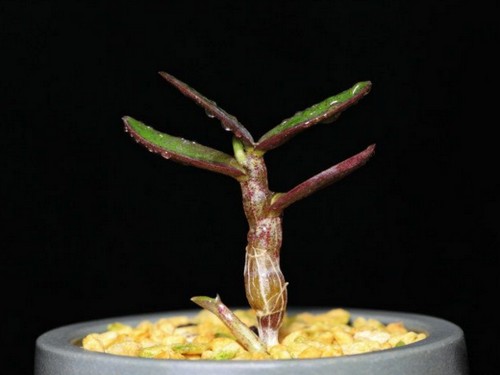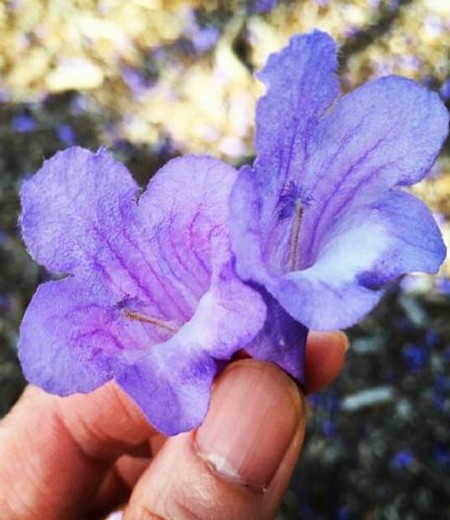The hydroponic culture method of white palm and the cause of withering and yellowing of non-flowering leaves
Hydroponic white palm not only has the function of traditional flowers to enjoy flowers and leaves, but also has the unique advantages of clean and environmental protection, labor-saving and time-saving, simple maintenance, elegant style and strong appreciation, which can not only enjoy the beauty of flowers, but also enjoy the elegant demeanor of flower roots. Hydroponic white palm is very convenient, known as "lazy flower", its daily care is very convenient.

[steps and methods]
1. The choice of basin
If you want water culture, buy a larger vase at the bottom, or put it in a medium-sized fish tank.
2. Suitable ambient temperature
The growth temperature of water-cultured white palm is generally 8 ℃-30 ℃, and it can grow normally in this range.
3. Suitable lighting
The light of hydroponic plants should be mainly scattered light, not necessarily exposed to the sun, and white palm is sensitive to light, especially in summer, direct sunlight should be avoided as far as possible.
4. Change water and clean flower roots
The water of hydroponic white palm can be changed about half a month in summer and once a month in winter, and a few drops of special nutrient solution for hydroponic flowers can be added (the concentration of the nutrient solution can be prepared according to the instructions).
The utensils used to cultivate hydroponic plants are easy to grow moss, affect the ornamental of the roots, and consume oxygen in the water. When changing water, you should first wash away the mucus from the flower roots with clean water, cut off the old roots and rotten roots, wash the soil from the roots and wash the moss on the utensils and roots for the first time. For each change of water, the interface of the water is suitable for the submerged root system, and the rest of the root segment is allowed to be exposed to the air.
5. Moisturizing and spraying foliar fertilizer
In order to prevent the occurrence of leaf dryness, spraying foliar moisturizing with clear water during daily nursing, it is best to spray foliar fertilizer once a week, which can not only provide nutrition for leaves, increase foliar luster, but also resist low temperature in winter. Using foliage plant nutrient solution, the leaf needs to be sprayed with 0.3% potassium dihydrogen phosphate solution for 2 to 3 times at budding stage, which can promote its flowering.
White palm requires sandy loam with loose, good drainage and rich humus. White palms prefer a warm, humid, semi-overcast environment and avoid strong direct sunlight. It is not cold-resistant, the suitable temperature for growth is 20 ℃-28 ℃, and the overwintering temperature is above 10 ℃. Even if the above-mentioned hydroponic methods are successful, hydroponic white palms may still appear the phenomenon of not blooming and withered and yellow leaves.
The main reasons for the failure of white palm to bloom and the withered and yellow leaves are:
1. The light is not suitable
White palm is more shady, as long as it has about 60% scattered light to meet its growth needs.
If the light is too dark for a long time, the white palm will grow weak and not easy to blossom. If the sun is too strong and direct, the leaves may turn yellow and affect the growth, which is disadvantageous to flowering.
2. Irrational watering
It requires high humidity, it is not conducive to blossom when the air is too dry, and each watering should be sufficient to keep the basin soil moist.
Too much or too little watering will affect the growth of white palm. Pot soil, such as stagnant water, is easy to cause rotten roots and plants withered and yellow, affecting plant growth and will not blossom. But if the growth environment is too dry, the new leaves will become smaller, yellow, or even withered. During the growing period, just keep the basin soil moist.
3. Lack of fertility
During the growing period, white palm grows rapidly and needs more fertilizer. If it is not fertilized for a long time, it will not blossom if it is not conducive to the healthy growth of the plant. During the growth period from May to September, some granular compound fertilizers are applied every month, which will not only grow leaves but also bloom.
4. the temperature is too low or too high
White palm can withstand high temperature, but not low temperature. It is not easy to blossom if the temperature is low. To make it blossom, it must be kept above 20 degrees Celsius, but the temperature should not be too high. If it exceeds 35 ℃, it will affect the growth of white palm.
5. Do not change the basin for a long time
White palm grows faster, generally 1-2 years its plant will be full pot, leaves crowded, difficult to blossom.
If the white palm does not change the basin for a long time, the soil fertility will decrease, so that the growth rate will slow down. Moreover, the soil is easy to harden and the air permeability is not good, which affects the respiration of the plant root system. Therefore, it is necessary to change the basin in time, and it is usually more appropriate to put it in the half shade after changing the basin.
It is suggested that the white palm should be placed in a place with sufficient indoor light and scattered light, and in summer, we should pay attention to shading to avoid direct sunlight; on May-9th, we should give sufficient water supply to make the soil often wet, and often spray water to the leaf surface and the surrounding environment; fertilize once every 10-15 days, especially phosphorus and potash fertilizer before flowering, nitrogen fertilizer when sending out new leaves, and change pots to apply base fertilizer at the right time.
Time: 2019-05-25 Click:
- Prev

Propagation and planting of Magnolia
Red Magnolia, also known as Magnolia, Magnoliaceae, Magnolia. It is a famous ornamental plant and traditional flower in China with beautiful trees and flowers. It is a precious early spring flower in the garden and has a long history of cultivation. Magnolia was planted as far back as the Spring and Autumn period.
- Next

Planting technique of Carpinus paniculata
Blue blossom, deciduous trees of the family Liriodendron, up to 15 meters high. Native to South America and Brazil, it has been introduced and cultivated in China for ornamental use in recent years. It is an ornamental, foliage and flowering tree species, widely planted as street trees in tropical and warm subtropical regions, with yellowish-white to gray wood, soft and light, straight texture, easy processing, and can be used as furniture wood.
Related
- Fuxing push coffee new agricultural production and marketing class: lack of small-scale processing plants
- Jujube rice field leisure farm deep ploughing Yilan for five years to create a space for organic food and play
- Nongyu Farm-A trial of organic papaya for brave women with advanced technology
- Four points for attention in the prevention and control of diseases and insect pests of edible fungi
- How to add nutrient solution to Edible Fungi
- Is there any good way to control edible fungus mites?
- Open Inoculation Technology of Edible Fungi
- Is there any clever way to use fertilizer for edible fungus in winter?
- What agents are used to kill the pathogens of edible fungi in the mushroom shed?
- Rapid drying of Edible Fungi

